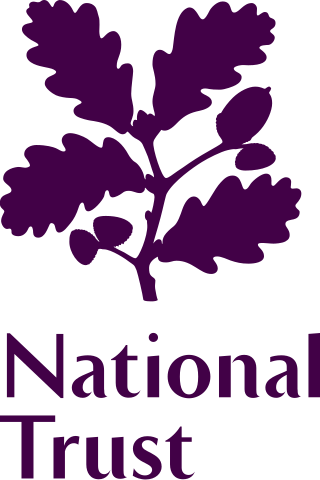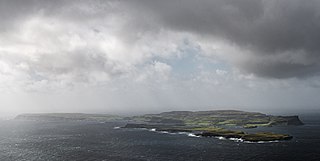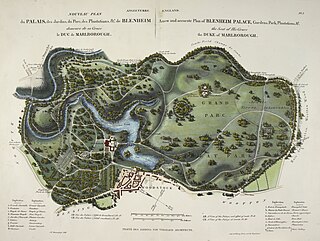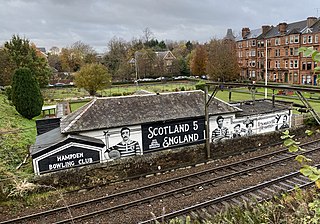
The National Trust is a charity and membership organisation for heritage conservation in England, Wales and Northern Ireland. In Scotland, there is the separate and independent National Trust for Scotland.

The National Trust for Scotland is a Scottish conservation organisation. It is the largest membership organisation in Scotland and describes itself as "the conservation charity that protects and promotes Scotland's natural and cultural heritage for present and future generations to enjoy".

The Edinburgh Academy is a private day school in Edinburgh, Scotland, which was opened in 1824. The original building, on Henderson Row in the city's New Town, is now part of the Senior School. The Junior School is on Arboretum Road to the north of the city's Royal Botanic Garden.

The Scottish Borders is one of 32 council areas of Scotland. It is bordered by West Lothian, Edinburgh, Midlothian, and East Lothian to the north, the North Sea to the east, Dumfries and Galloway to the south-west, South Lanarkshire to the west, and the English ceremonial counties of Cumbria and Northumberland to the south. The largest settlement is Galashiels, and the administrative centre is Newtown St Boswells.

Argyll and Bute is one of 32 unitary council areas in Scotland and a lieutenancy area. The current lord-lieutenant for Argyll and Bute is Jane Margaret MacLeod. The administrative centre for the council area is in Lochgilphead at Kilmory Castle, a 19th-century Gothic Revival building and estate. The current council leader is Councillor Jim Lynch.

Dunoon is the main town on the Cowal peninsula in the south of Argyll and Bute, Scotland. It is located on the western shore of the upper Firth of Clyde, to the south of the Holy Loch and to the north of Innellan. As well as forming part of the council area of Argyll and Bute, Dunoon also has its own community council. Dunoon was a burgh until 1976.

Canna is the westernmost of the Small Isles archipelago, in the Scottish Inner Hebrides. It is linked to the neighbouring island of Sanday by a road and sandbanks at low tide. The island is 4.3 miles (6.9 km) long and 1 mile (1.6 km) wide. The isolated skerries of Hyskeir and Humla lie 6.2 miles (10.0 km) south-west of the island.

Loch Fyne, is a sea loch off the Firth of Clyde and forms part of the coast of the Cowal peninsula. Located on the west coast of Argyll and Bute, Scotland. It extends 65 kilometres (40 mi) inland from the Sound of Bute, making it the longest of the sea lochs in Scotland. It is connected to the Sound of Jura by the Crinan Canal. Although there is no evidence that grapes have grown there, the title is probably honorific, indicating that the river, Abhainn Fìne, was a well-respected river.

Drum Castle is a castle near Drumoak in Aberdeenshire, Scotland. For centuries it was the seat of the chief of Clan Irvine. The place-name Drum is derived from Gaelic druim, 'ridge'. The site is located approximately 6+1⁄2 miles northeast of Banchory and 3 miles west of Peterculter. The property is now owned by the National Trust for Scotland and is open to the public.

Historic garden conservation is a specialised type of historic preservation and conservation or restoration concerned with historical and landmark gardens and designed landscapes.

The Stackpole Estate is located between the villages of Stackpole and Bosherston in Pembrokeshire, Wales, within the Pembrokeshire Coast National Park. It is situated within the community of Stackpole and Castlemartin.

Garden tourism is a type of niche tourism involving visits to famous gardens and botanical gardens and places which are significant in the history of gardening. Garden tourists often travel individually in countries with which they are familiar but often prefer to join organized garden tours in countries where they might experience difficulties with language, travel or finding accommodation in the vicinity of the garden. In the year 2000 the Alhambra and the Taj Mahal both received over two million visitors. This poses problems for the landscape manager.

Dumfries House is a Palladian country house in Ayrshire, Scotland. It is located within a large estate, around two miles (3 km) west of Cumnock. Noted for being one of the few such houses with much of its original 18th-century furniture still present, including specially commissioned Thomas Chippendale pieces, the house and estate is now owned by The King's Foundation, a charity which maintains it as a visitor attraction and hospitality and wedding venue. Both the house and the gardens are listed as significant aspects of Scottish heritage.

Castle Campbell is a medieval castle situated above the town of Dollar, Clackmannanshire, in central Scotland. It was the lowland seat of the earls and dukes of Argyll, chiefs of Clan Campbell, from the 15th to the 19th century, and was visited by Mary, Queen of Scots, in the 16th century. Mary was impressed by this and said "this reminds me of home".
Events from the year 1944 in Scotland.

Hampden Park was a football ground in Crosshill, Renfrewshire. The home ground of Queen's Park from 1873 until 1883, it was the first of three stadiums to bear the same name, and hosted the first-ever Scottish Cup final in 1874.

Lamb's House is a historic A-listed building in Leith, a northern district of the City of Edinburgh, Scotland, which has served as both a place of residence and warehouse. The present house is an example of early-17th-century architecture typical of harbour towns around the North Sea.

Dean Graeme Campbell is a Scottish professional footballer who plays as a midfielder for League Two side Barrow.

Loch Gair Hydro-Electric Scheme is a small-scale hydro-electric power station, built by the North of Scotland Hydro-Electric Board and commissioned in 1956. It is located near Lochgair, a hamlet to the north-east of Lochgilphead, Argyll and Bute in Scotland. It was originally designed to supply power to Lochgilphead and the surrounding communities, but is now connected to the National Grid.


















